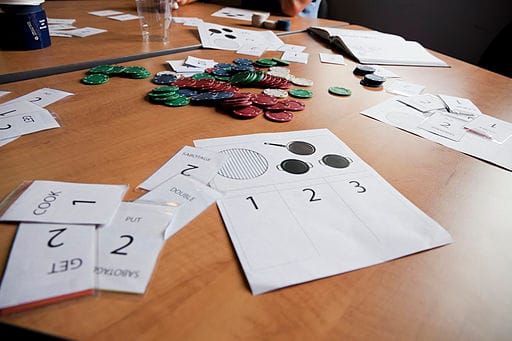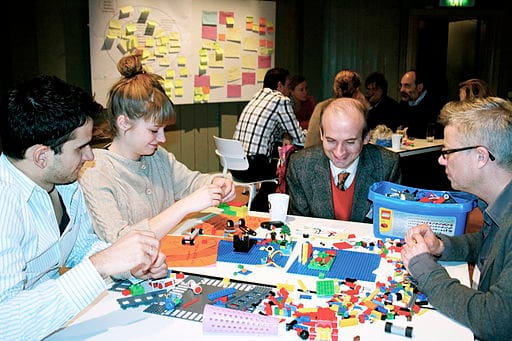In the last few years, there has been a growing interest in the application of game elements to real-life goals and tasks. These efforts are often directed towards self-improvement, encouraging positive lifestyle changes, and increasing motivation to complete work objectives. The idea of using games to modify activities that are not traditionally considered games is not new. Games have been used to support real-life objectives many times in the past, such as sports being used to motivate exercise and healthy habits, or simulation games being used for training or skill development. This idea has now become especially popular. In the past decade, it has drawn a fair amount of interest both from academics and practitioners, because of two trends in modern culture: 1) Digitalization, which results from increased access to digital and mobile technologies that are now pervasive in our everyday lives, and 2) Ludification, which consists of the introduction of elements of playfulness into our lives and culture.
But how can games and play help achieve real-world goals? Play is often viewed as an activity of pure entertainment or leisure, which lacks the commitment to accomplish real-world goals, such as personal, educational, or business objectives. Thus, by introducing elements of play into the execution of similar tasks, will we not risk undermining commitment to the accomplishment of the intended goals? Or is it possible to instead use playful and gameful design to increase motivation to accomplish these tasks?

How can games and play help achieve real world goals?
Play is a complex concept to be defined with a few words, although many authors have tried to write a formal definition (for an extensive discussion on the problem with defining games and play, we recommend the book Rules of Play, by Salen and Zimmerman). Playing is an activity that is based on the free and purposeless exploration of possibilities. Play arises from curiosity, creativity, and improvisation. Fun arises from play as the exercise of freedom, autonomy, and creativity. Examples of play are sketching, drawing or painting, improvisational construction with Legos or Minecraft, composing music, joking, or exploring new geographical areas or routes.
A game arises when rules and goals are added to play. Thus, a game may be seen as a playful activity constrained by rules and goals. There are many definitions of games depending on the point of view, but a great one came from Bernard Suits in his book The Grasshopper: “playing a game is a voluntary attempt to overcome unnecessary obstacles.” In games, fun arises from overcoming the self-imposed challenge of accomplishing the defined goals while bound by the imposed rules. Fun from gaming comes from accomplishment, mastery, and perseverance, as one finds himself or herself able to overcome all the obstacles to reach the goal. Playfulness and gamefulness are often seen as opposite sides of a scale, as suggested by Roger Caillois in his book Man, Play and Games, because playing is a free and purposeless activity (which Caillois called Paidia), while a game is a regulated and objective-oriented activity (which Caillois called Ludus). Nevertheless, a game is still a form of play, and a well-designed game may allow the player to use playful interactions such as curiosity, creativity, and improvisation to find new ways to surmount the obstacles created by the game rules. Examples of games are sports, tabletop games or playing cards with well-defined rules and goals, and the various types of digital games.
Play has been said to be an activity separated from serious work. In fact, one of the most important cultural studies on play, the 1938 book Homo Ludens by Johan Huizinga, defines that two of the essential characteristics of play are an occurrence outside of ordinary life and a lack of seriousness. Huizinga introduced the idea, later expanded by Salen and Zimmerman, of a “Magic Circle” that separates play from serious activities and that is entered when one is beginning to play. However, more recent initiatives have been increasingly integrating playfulness and gamefulness into serious activities. Recent observations are revealing that the abilities required to a good player are the same ones required to solve complex and global scale problems. A playful mind – in other words, a curious, creative, and experimental mind – helps one craft innovative solutions to real life challenges, while a gameful mind – in other words, a focused, perseverant, and challenge-oriented mind – helps one endure and make all efforts necessary to find the solution to challenges of any size.
Games are able to engage players to overcome self-imposed challenges by means of their own intrinsic motivations. Players often have no other necessity to tackle these challenges beyond their own motivation to put their skills to the test. Many studies have been conducted to identify the mechanisms that drive this motivation, such as the book Glued to Games: How Video Games Draw Us In and Hold Us Spellbound by Rigby and Ryan. Self-Determination Theory (SDT) is often used to understand which internal motives lead human beings to action. Playful activities satisfy the universal human need for autonomy, the urge to be causal agents of one’s own life, while gameful activities satisfy the need for competence, the desire to experience mastery and control the outcome of a situation. When play occurs in groups, the social interactions that arise further contribute to satisfy the need for relatedness, the want to interact, be connected to, and experience caring for others, thus fulfilling the three innate needs that allow optimal function and growth of the human being according to SDT.
Using games and play to achieve real-world goals does not necessarily imply that seriousness will be taken away from the activities being accomplished. Instead, it means that these activities must be designed in ways that leave space for playful minds to experiment and create innovative solutions, for gameful minds to take on challenges that will lead to the accomplishment of quite difficult goals, and for many people to cooperate in ways that will allow the accomplishment of greater goals that would not be possible with the efforts of one person alone.

Types of game-inspired applications
Two main approaches are commonly used to introduce playfulness and gamefulness into real world activities: serious games and gamification.
Serious Games: This approach consists of the development of full games dedicated to serious or real world objectives. This classification is often detailed even further to specify the kind of real-world goal accomplished by the game. For example, Games for Learning are those oriented towards teaching or transmitting knowledge to players; Games for Health aim to improve players’ health, usually through education, development of new habits, or the execution of healthy tasks; Exergames are used as forms of physical or mental exercise; Simulation Games are used to exercise or acquire different skills through the simulated execution of real world tasks; and Games for Change or Games with a Purpose try to solve various tasks related to the wellbeing of society, such as concerns related to equality, the environment, or health care.
Some examples of serious games are MinecraftEdu, a customization of the popular sandbox game Minecraft used in schools for teaching purposes, and FoldIt, a game that enables anyone to contribute to scientific research on protein folding.
Gamification: This approach consists of the use of game design elements in non-game contexts. The difference is that, in this case, there is no presence of a full game with specific activities inherent to the game. In gamified applications, the player continues to execute the real world activities he or she was used to, with the addition of game design elements aimed at creating the playful or the gameful setting. Some examples of commonly used game design elements are scoring (points, leaderboards, or badges), levels, challenges or quests, narrative, teams or other forms of social interaction, competition, boss battles, customization, virtual economy, and rewards.
Some examples of gamified applications are: Fitocracy (fitness), Mint (finances), Classcraft (classroom), HabitRPG (productivity), and SuperBetter (health).
Although the use of digital games or gamified applications is most common, the application of these ideas can also be deployed outside of the digital world, as in the following image.

Considerations
The first wave of gamification has received substantial criticism for providing nothing more than an avenue for designers to direct the behaviour of their users. One of the most well-known critiques came from Ian Bogost. Even one of the most prominent defenders of the idea of using games or elements of games to solve real world problems, Jane McGonigal, has distanced her work form the word gamification and prefers to use the term Gameful Design, and many others are following the same path.
The problem is that, as is the case with any form of design, gamification can be done well or done poorly. And unfortunately, many view gamification as a market and business strategy to make money with an easy implementation. Current academic studies are showing that the use of gamification or gameful design does indeed have the potential to accomplish the desired results; however, the most effective ways of implementing such strategies are yet to be determined. Moreover, it is probable that different game design elements will affect different people in different ways, and more studies are also needed to fully understand the manifestation of this variability. Methods or frameworks for implementing good gamified solutions are currently being developed and tested (such as the RECIPE for Meaningful Gamification). Many of the first gamified applications relied purely on the use of scoring elements and rewards, which many game designers contest on the grounds that such features do not define entire game systems, and fail to deliver sufficient fun and motivation. Some research has suggested that extrinsic motivation by means of external rewards, even being able to accomplish the desired results in short-term, actually has the opposite effect in the long-term, decreasing one’s inner motivation to accomplish the tasks.

The use of games and play to achieve real-world goals is a promising field. However, the implementation of effective and meaningful applications requires care, while the mechanisms involved in such experiences are not yet fully understood. As research in this area continues to advance, new methods to understand, design, implement and validate these experiences will be developed, and new possibilities will arise as this field of study matures.
Conclusion
Ultimately, the use of games and play to achieve real-world goals should aim to empower human beings, helping them achieve their life goals more often and with less difficulty. Adding elements of fun and challenge to the execution of real life tasks does not mean that their seriousness will be diminished; it simply lends them a higher degree of enjoyability. Technology and design methods will not act as replacements for human willpower and consciousness, but as tools that may be used to augment the human capacity for achievement.
This article did not present answers to many questions, such as: what are the most effective game design elements or gameful applications? How can the effectiveness of such applications be evaluated? How can effective and meaningful gameful experiences be designed and implemented? These questions will be the subject of future publications and posts of the HCI Games Group. We will be delighted to have you with us on this journey!


